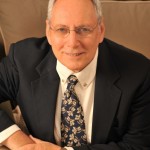Adverse Childhood Trauma: Setting the Stage for Chronic Pain
Paul Epstein, ND and Node Smith
“When any experience of body, heart, or mind keeps repeating in consciousness, it is a signal that this visitor is asking for a deeper and fuller attention. Under all the tears, the pain, the fear, and the anger we have contracted our self around, we can find freedom, joy, and ease in the face of all life.”
-Jack Kornfield1
In the June, 2013, issue of NDNR, Dr. Epstein briefly discussed correlations between childhood trauma and chronic disease. In this article, we expand upon this relationship, with specific attention to how and why the relationship operates in so many people diagnosed with pain syndromes, including fibromyalgia, irritable bowel syndrome (IBS), interstitial cystitis, chronic back pain, migraine, and carpal tunnel syndrome.
Setting the Stage
Adverse childhood events are much more common than we might think. Most people survive them and don’t look back. But they are embodied within us; they stay with us and are carried with us as bodily burdens, whether or not they are remembered. Residual trauma from adverse childhood events mainfests in many people as various pain syndromes, simply because the very nature of these traumas is painful – the emotional impact is painful.
“What emotions could be so terrible as to induce the brain to subject someone to severe physical pain and frightening neurological symptoms? The answer to this question is basic, not only to the understanding of these pain syndromes but to the whole range of psychosomatic disorders.”2
The dysfunctional home establishes an environment where many of these adverse childhood events are prevalent: neglect, emotional, physical or sexual abuse, abandonment. Children growing up in these environments tend to carry into adulthood the pain of their childhood.
The classically studied alcoholic home serves as an exemplary model of such an atmosphere. More than 28 million Americans grew up in alcoholic homes, many of whom were diagnosed with chronic pain syndromes and other chronic diseases as adults.3 The dysfunctional family dynamic of the alcoholic home operates by 4 basic rules: rigidity, silence, denial, and isolation. These rules predispose members to certain characteristics, existing in 4 general categories3:
- Emotional characteristics – fear, anger, hurt, resentment, distrust, loneliness, shame, guilt, numbness
- Mental characteristics – thinking in absolutes, compulsive thinking, indecision, learning disabilities, compulsive thinking, lack of information, confusion, hypervigilance
- Physical characteristics – tense shoulders, lower back pain, digestive disorders, acid reflux, constipation, stress-related behaviors (tension, hypertension), allergies
- Behavioral characteristics – crisis-oriented living, manipulation behavior, intimacy problems, inability to have fun, compulsive/addictive disorders
These are not just characteristics; these are symptoms. When any of these are demonstrated by our patients with pain syndromes, they should be regarded as concomitant symptoms of no lesser significance than the physical pain of fibromyalgia or IBS. These symptoms constitute their emotional pain. Chronic physical pain can occur as a deterrent from interacting with the deeper wounds that have scarred the emotional body of an individual. Wounds like this do not simply disappear—they are life-long effects of chronic shock that are often dismissed or overlooked. Alice Miller expressed this well:
“The truth about childhood is stored up in our bodies and lives in the depths of our souls. Our intellect can be deceived, our feelings can be numbed and manipulated, our perceptions shamed and confused, our bodies tricked with medication, but our soul never forgets. And because we are one, one whole soul in one body, someday our body will present its bill.”
-Alice Miller4
Physical pain may, in many cases, be an attempt to bring awareness to the deeper aspects of a person’s history. These can be scary for the patient to look at, and perhaps even more painful than the physical pain they are suffering.
The dysfunctional family dynamic, which breeds childhood trauma and paves the way for the characteristics listed above, is not limited to the alcoholic home. Any home that operates by rules such as silence, fear, isolation, anger, judgment is fertile ground for emotional pain to create or contribute to chronic disease.
In far too many individuals, this traumatic pain cycle becomes a physical burden that leads to great suffering. But is it the physical pain or the emotional pain they are suffering from? An aspect of this equation, that is important to recognize, is that the burden of this pain is not under the control of the body, or even the mind, though the mind is the necessary gatekeeper. The control of this cycle exists in and through the emotional trauma that has been trapped inside the body since childhood or adolescence.
Clinical Patterns
Yes, patients come to us experiencing very real pain. They are searching for relief, and, for many, the ND they consult is one of a long list of other practitioners. The misunderstanding about pain, which can undermine the best intentions of a treatment protocol, is that pain is inherently produced by the body.
Pain is an interpretation of certain stimuli by the brain. It is a top-down manifestation.5 Pain is not created by the area(s) of the body experiencing the pain; rather, those areas of the body are experiencing pain because the brain is directing one’s attention to them. In the easiest of examples, a broken foot hurts because the brain acknowledges a need for the fracture to be addressed. A sprained ankle hurts because the brain acknowledges the need to rest so that repair can occur. A patient with fibromyalgia often hurts because the brain acknowledges a need to process a lifetime of traumatic experiences.
“Chronic pain is often caused by nerve sensitization and learned nerve pathways triggered by stress and emotions (rather than actual tissue destruction)…Emotions are very powerful forces that can cause physical symptoms and this pain can be unlearned.”
–David Butler6
Fibromyalgia may present as physical pain, but it is mental-emotional pain that requires treatment, and on a mental-emotional level. It is not the physical body which is hurt. In fact, most fibromyalgia patients have decreased pain with movement – there is no evidence of structural or physically destructive processes.7 The body with fibromyalgia is often bearing the burden for the emotional wounds— for abandonment, neglect, abuse. We must bear this in mind when a patient tells us that they “hurt all over and it never stops.”
The Case of Mrs. Jones
The story of Mrs. Jones serves as a real-life example of a common manifestation of childhood trauma. Mrs. Jones, who was a somewhat anxious 35-year-old businesswoman, called me on the phone one afternoon. She immediately identified herself as a fibromyalgia patient, having been diagnosed 3 or 4 years prior. Since her diagnosis she had been seen by numerous practitioners, including chiropractors, osteopaths, acupuncturists, and naturopaths, none of whom had been able to alleviate the pain, which she described as near-constant aching, with light sensitivity and mild vertigo. She spent a lot of time in bed.
She was very interested in how many cases of fibromyalgia I had worked on and how many patients I had cured. It was very clear that the physical aspect of her ailment was very important to her and that she identified strongly with her diagnosis. During this initial phone consultation I briefly explained to her that I had worked with patients who had been previously diagnosed with fibromyalgia, but that the type of work I do is a process, which helps facilitate patients to understand the underlying pain, suffering, and trauma that so often exist beneath the surface of a disease like fibromyalgia. Deflecting the idea that her pain had anything to do with deeper wounds, Mrs. Jones proceeded to explain that she was on a 3-month waiting list for a renowned fibromyalgia “specialist” in the area, and thus perhaps should wait to make an appointment until after she had seen him.
Mind/body psychotherapy works extremely well in conjunction with most modalities, but Mrs. Jones opted not to come in at that time, and instead waited 3 months to see the specialist. As I hung up, I didn’t think the chances of her calling back in 3 months were very good.
This initial interaction with Mrs. Jones demonstrates how little emphasis is put into emotional trauma when there is physical pain on which to hang a diagnosis. This patient had seen multiple providers, including alternative practitioners, and she was still unaware of a possible connection between her physical pain and her mental/emotional state, and unaware of her mental/emotional pain.
Six months later she called to make an appointment. When we sat down, she described how the “specialist” in upstate New York had run her through countless tests to rule out a laundry list of possible alternative diagnoses. After 3 months of tests and imaging studies, the doctor settled on the original diagnosis of fibromyalgia and told her that there was nothing he could really do for her. She felt defeated; she had hit rock bottom.
As we talked, I explained to her that we weren’t going to focus on her fibromyalgia; instead, we were going to look at her life, including any traumas that may be held within her emotional body and creating an emotional/physical pain pattern. She agreed and we began the process by exploring her biographical narrative, which I have found is a crucial first step in working with any patient on this level.
As it turned out, Mrs. Jones grew up in an alcoholic home and had been abused as a child. Currently, she was in a dysfunctional relationship that mirrored that of her childhood, and she hated her job. We talked about the affects of adverse childhood events and how they can become trapped in the body, manifesting as pain syndromes. We talked about how the trauma she suffered as a child, in and of itself, is painful and should not be disregarded. I suggested that she consider herself free from the diagnosis of “fibromyalgia,” that she was actually suffering from the effects of these past events.
Working with past childhood trauma can be much more painful than experiencing the pain of the physical body, but the healing that occurs during the process is incredibly rewarding. Mrs. Jones and I began working with her biography, using guided imagery and insight meditation. I served as her primary care physician during this time, regulating her diet, exercise program, and prescribing remedies for minor maladies that came and went. It was a somewhat slow process, which culminated in small changes in her level of pain over a period of about a year. After that first year she was experiencing hardly any pain. More importantly, she had managed to dissolve her abusive relationship with her husband, was now living alone, and had found a new job. She was genuinely happy with her progress and her life.
Conclusion
So, what is the real diagnosis? What is the real pain? This is an important question, since the diagnosis is what offers us a footing and drives the treatment forward. If we can name something, then we feel like we know what to do. In many of these chronic diseases there is no known pathophysiology. The pain is real, and the symptoms are real, but there is no pathophysiology; in a sense there is “no disease.” But certainly there is dis-ease.
While we have been referring to commonly considered “pain syndromes,” anyone suffering from adverse childhood traumas may be suffering from chronic maladies associated with emotional pain; asthma, allergies, weight gain, and any and all addictions may be covering up painful memories. The underlying traumas are the pain; shame, abandonment, and neglect are all painful.
There is no method for diagnosing emotional pain and trauma. There are diagnostic codes for mental health conditions, and physical conditions, but when the physical and mental are detrimentally affected by an emotional state, there is no avenue for identification. We must not let this lack of definition deter us from looking within the hearts of our patients, to the wounds they hold deep inside, as the underlying cause of their chronic illnesses – this is their pain. Despite the best dietary advice, exercise regimens, and meditative practices, patients who leave their spirits unaddressed still suffer.
The healing of this pain does not occur through an herb, diet, or acupuncture. It is presence, it is love, it is being with Truth. We can learn to relate to pain and choose how to respond to it, or we can allow ourselves to get caught in a conditioned reaction and resistance that serves only to worsen the pain and suffering in a self-perpetuating, vicious cycle. This is true mind/body psychotherapy. Needless to say, any of us who work with patients would be well advised to look within and heal ourselves in the same manner.
Paul Epstein, ND is a mind-body therapist, mindfulness meditation teacher, speaker, workshop leader, and author. He graduated from NCNM in 1984, where he also directed the clinical lifestyle change program “Healthstyles.” He has successfully advocated and integrated the clinical application of mind-body medicine, mindful awareness and contemplative body-centered psychotherapy for 30 years. Paul co-founded the Israel Center for Mind-Body Medicine. He graduated from the Academy for Guided Imagery, completed the 3-year training program for Community Dharma Meditation Leaders at the Spirit Rock Meditation Center, and has trained in the “Internal Family Systems” model of psychotherapy. He practices in Westport, CT, where he was also founded the Insight Meditation Community of Fairfield County. Dr. Epstein has taught mindful healing workshops worldwide, has lectured at numerous annual conferences, and has taught courses, continuing education programs and electives at NCNM, Bastyr University, CCNM, OAND and UB. He mentors healthcare professionals to integrate mindfulness and mind-body therapy. He will be conducting a CCNM online training course in the fall of 2013. He is author of the book, Happiness Through Meditation, and has several other articles available. A sequel to the above article will be featured in the near future. Website: www.drpaulepstein.com; email: [email protected]; phone: 203-722-2358.
 Node Smith is currently a third-year naturopathic student and is mentoring with Dr. Paul Epstein. He also has been elected to the NMSA national philosophy chair position for 2013-2014, through which he has hopes of strengthening the bonds between students and elders through experiential opportunities that bring together both generations to learn and grow from one another. Node is the lead coordinator for the 2013 ReVitalization Retreat and is currently working with Dr. Epstein to form a year-long mind/body medicine curriculum, to increase the training offered in this important area.
Node Smith is currently a third-year naturopathic student and is mentoring with Dr. Paul Epstein. He also has been elected to the NMSA national philosophy chair position for 2013-2014, through which he has hopes of strengthening the bonds between students and elders through experiential opportunities that bring together both generations to learn and grow from one another. Node is the lead coordinator for the 2013 ReVitalization Retreat and is currently working with Dr. Epstein to form a year-long mind/body medicine curriculum, to increase the training offered in this important area.
References
- Kornfield J. A Path With Heart: A Guide Through the Perils and Promises of Spiritual Life. New York, NY: Bantam Books; 1993.
- Sarno J. The Mindbody Prescription: Healing the Body, Healing the Pain. New York, NY: Warner Books, Inc.; 1998.
- Kritsberg W. The Adult Children of Alcoholics Syndrome: A Step-By-Step Guide to Discovery and Recovery. New York, NY. Bantam Books; 1988.
- Miller A. Breaking Down the Wall of Silence: The Liberating Experience of Facing Painful Truth. New York, NY: Plume; 1996.
- Butler DS. The Sensitive Nervous System. South Australia: Noigroup Publishing; 2000.
- Schubiner H. Unlearn Your Pain: A 28-Day Process to Reprogram Your Brain. Pleasant Ridge, MI: Mind Body Publishing; 2010.
- Clauw DJ. Fibromyalgia: an overview. Am J Med. 2009;122(12 Suppl):S3-S13.











